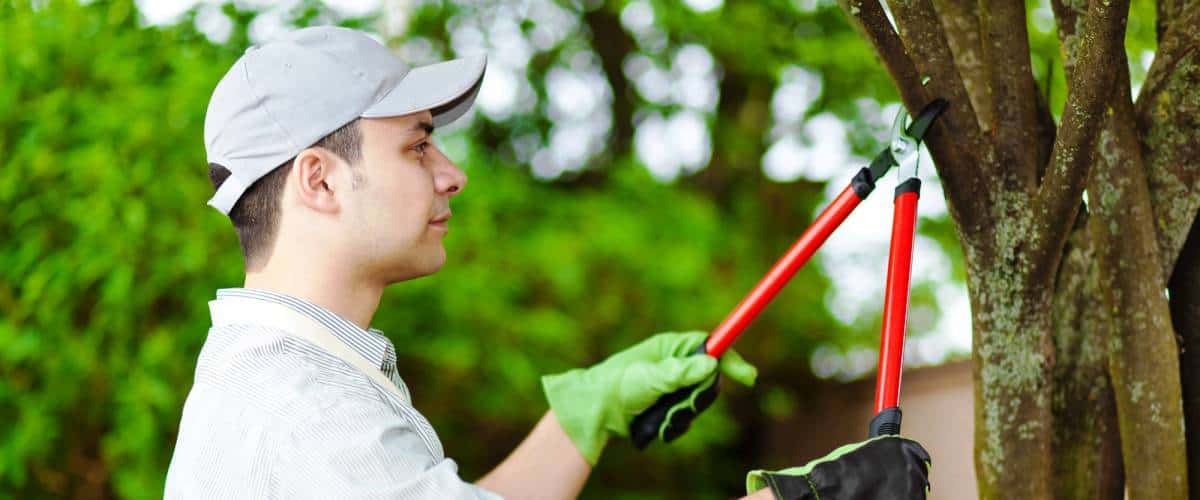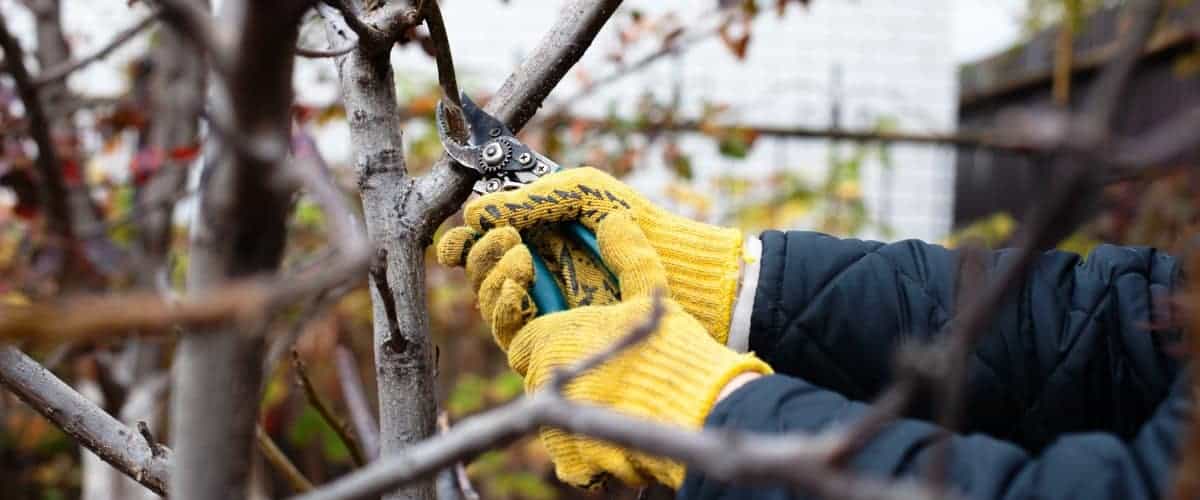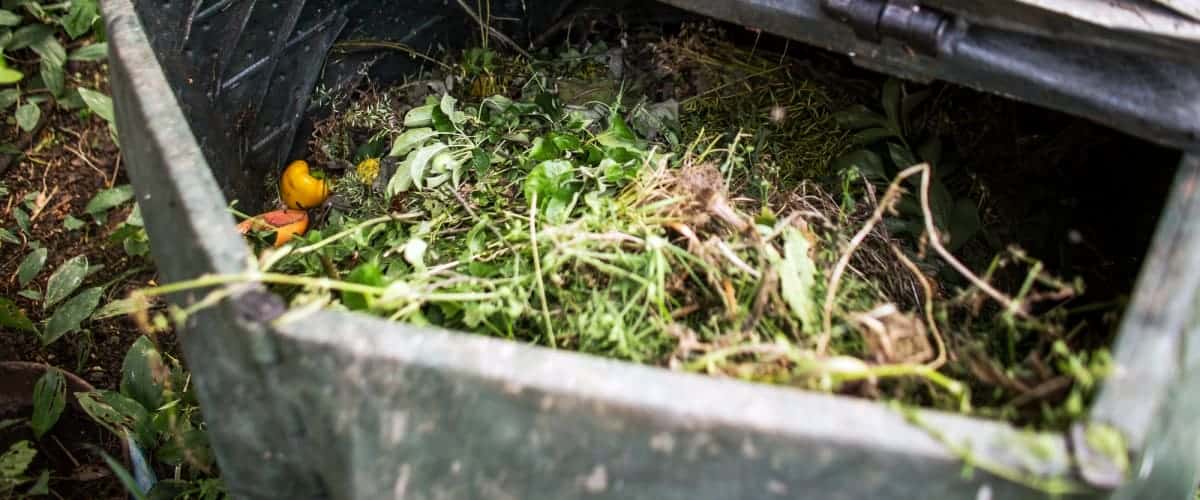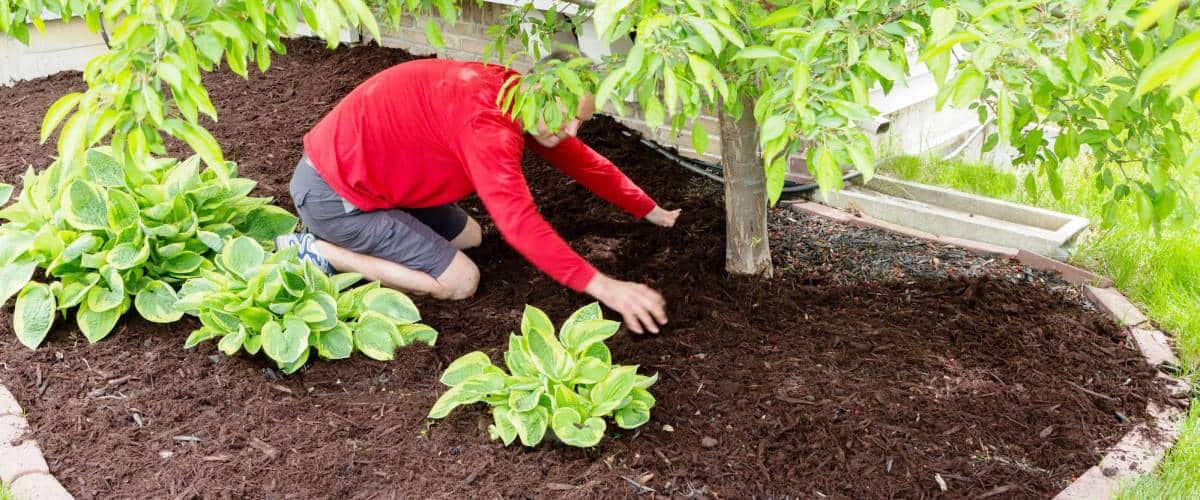
Viva Trees
Get a FREE professional tree service estimate from Viva Trees - one of the most trusted tree companies in the U.S.
OR CALL
Get a Free Estimate
Every project starts with a free tree service estimate. Enter your details to get started.

Get a FREE professional tree service estimate from Viva Trees - one of the most trusted tree companies in the U.S.
OR CALL
Every project starts with a free tree service estimate. Enter your details to get started.

Trees are a beautiful and essential part of the environment, and we must ensure that we care for them in the best way possible. That’s why using sustainable care practices is essential when tending to our trees.
I was amazed by the benefits of using sustainable tree care practices! Not only does it help to preserve the environment and promote biodiversity, but it also helps to reduce water and energy consumption, as well as the cost of maintenance.
In this article, I’ll discuss the benefits of using sustainable tree care practices and explain why they’re essential for the environment and your wallet.
Sustainable tree care is a practice that focuses on the health and longevity of trees. It involves a holistic approach that balances the needs of the environment, the trees, and the people interacting with them. It is a proactive approach to maintenance and management that aims to keep and protect the natural resources that trees provide.
Sustainable care is about taking care of trees in a way that will have a lasting impact on their health and the environment surrounding them. It involves considering the long-term effects of our actions and ensuring that the trees we care for are around for generations to come.
Sustainable care is about finding the balance between the trees’ health and the people’s needs. It’s about making intelligent decisions to ensure health and longevity while providing the benefits they can offer.
Taking a proactive approach to care and management can ensure that the trees we love and enjoy today will still be around for future generations. And with that, let’s look at the benefits of implementing sustainable care practices.
Sustainable care practices offer a variety of benefits that can help maximize your trees’ health and beauty. These practices focus on providing long-term solutions that are healthy for the environment and support the ecosystem.
Tree Health: One of the most significant benefits of using sustainable care practices is that they help protect your trees’ health. These practices provide them with the nutrients and resources they need to thrive, which can help prevent spreading of diseases, pests, and other environmental disturbances. This can help to ensure that they stay healthy and strong for longer.
Environment: These practices also help to protect the environment. By avoiding harsh chemicals and fertilizers, these practices reduce the number of toxins that can enter the soil and water. This can help to protect the environment from pollutants, and it can also help to prevent the spread of harmful diseases.
Carbon Footprint: Another benefit is that they can help reduce your carbon footprint. These practices use natural resources, such as compost and mulch, to give your trees the necessary nutrients. This can help reduce your reliance on synthetic fertilizers, which can harm the environment.
Resources: Finally, practicing sustainable care can help you save money in the long run. These practices focus on providing long-term care instead of reactive care, which can help reduce maintenance and repair costs. This can help save money on potential tree care expenses, such as pruning or disease treatments.
TIP: Before you choose a sustainable tree care provider, be sure to do your research. Ask questions about their practices, and make sure that they use sustainable techniques that will help to protect the health of your landscape and the environment.
When choosing a provider, it’s essential to consider all the factors that will affect the health and longevity of your trees. There’s a lot to view, from the type of equipment to the products they use.
Eco-friendly: First, you’ll want to ensure that the company you select is experienced and knowledgeable about all aspects of environmentally-friendly practices. Ask questions about the types of products they use, and ensure they’re using eco-friendly or organic ones that are safe for your trees and the environment. You’ll also want to ask about their methods and techniques to ensure they follow the best practices.
Green Efficiency: You’ll also want to ensure they use the correct equipment type. Electric saws and chainsaws are a must, and they should be able to provide you with the right kind of equipment designed to be used eco-friendly.
Sustainable Care: You’ll want to ensure they are committed to sustainable care. Ask them about their long-term plans for your trees and how they plan to ensure that they remain healthy and vibrant for years to come.
Choosing the right provider is essential to ensure your trees get the care they need to remain healthy and vibrant for years. Considering all the above factors, you can be sure your trees are in good hands.
In the next section, we will explore ways to minimize the effects of urbanization.
Following a few basic rules is essential to limit urbanization’s tree damage.
Energy & Recycling: To start, we can reduce our carbon footprint by minimizing energy use and recycling as much as possible. This can help reduce the number of greenhouse gases in the air, which can directly affect your property.
Planting: Additionally, we can take a proactive approach by planting new trees in our communities. Not only will this help to replenish the air with fresh oxygen, but it will also help to provide a habitat for local wildlife. This can be a great way to bring some green into an otherwise concrete landscape.
Knowledge: Finally, it’s essential to be mindful of how trees are cared for in urban areas. It’s important to choose providers knowledgeable about the local environment’s needs. By doing so, we can ensure they are well-cared for and thrive in their natural habitat.
After exploring ways to lessen the consequences, let us observe how technology can support responsible tree care practices.
From precision pruning to automated irrigation systems, technology can be a powerful tool in helping to keep our urban forests healthy and vibrant.
The world is changing rapidly, and technology is vital in environmentally friendly care methods. A recent report found that over 70% of arborists now use digital mapping tools to plan and manage professional tree care services.
This technology helps reduce time and cost and allows arborists to provide better quality tree services more efficiently and sustainably.

Using technology also helps to minimize the impact of urbanization on trees. Licensed arborists can use digital mapping tools to plan and manage maintenance services to identify the trees that most need care.
They can also determine the best course of action to ensure the health of each tree. This helps to prevent unnecessary damage or destruction, and it also helps to preserve natural habitats in urban areas.
As technology evolves, it will become even easier to implement sustainable methods. By taking advantage of the latest technological advances, arborists can ensure that the trees in their care are managed as efficiently and sustainably as possible.
Knowing what mistakes to avoid when using environmentally-friendly practices is essential to keep trees healthy in urban areas.
There are some common mistakes to avoid when implementing these methods.
Specific Needs: For one, it’s important to remember that trees are living organisms, and their needs can vary from species to species. Trying to use a one-size-fits-all approach will almost always lead to problems.
Location: Another common mistake is failing to factor in the local climate. Trees thrive in different environments, and what works in one place may not necessarily be the best choice for another. To ensure that yours are getting the care they need, research the local climate and soil conditions before making any decisions.
Lifecycle: Finally, it’s essential to understand the lifecycle of trees when implementing sustainable approaches. A tree in the early stages of growth may require a different level of care than a mature one. Knowing their age and needs can help ensure they get the proper care at the right time.
To ensure a successful tree care plan, it’s essential to understand their lifecycle as you move forward.
When it comes to strategies for sustainably nurturing trees, one of the most important things you can do is understand the tree lifecycle. Knowing how trees grow, respond to environmental changes, and interact with other species is essential.
One of the common objections to this type of care is that it takes too long and is too costly. While it’s true that sustainability takes time and money, understanding the lifecycle is the key to avoiding expensive and time-consuming mistakes. By taking the time to understand how trees grow, interact with their surroundings, and change over time, you can make informed decisions that will benefit them and the environment in the long run.
From here, we can look at the benefits of regular maintenance. Tree pruning services can help keep trees healthy and strong while providing many other benefits.
Tree trimming and pruning play an essential role. Not only do they improve its appearance, but they also help to maintain its health and structural integrity.
By removing dead, diseased, or damaged branches, you can prevent the spread of decay and disease to other parts of the tree. Additionally, pruning and trimming can help improve the overall shape and reduce its risk of damage by strong winds.

From my experience, pruning, and trimming can also help to open up the canopy, allowing more light and air to reach the inner branches. This can help to create a healthier environment and stimulate new growth. Plus, it can help to make the tree easier to maintain throughout its lifespan.
Given the many benefits of pruning and trimming, you must use sustainable practices. This means using the right tools and techniques and understanding the impact of pruning on overall health. With the right approach, you can ensure your tree remains healthy and beautiful for years.
Now let’s talk about how soil health influences viable practices.
Soil health is paramount when it comes to long-term care. Healthy soil means healthier trees; the healthier they are, the better able to withstand environmental stressors, such as drought and extreme temperatures. Here are four ways to ensure that your soil is healthy:
1. Test your soil: Knowing your soil’s exact composition will help you decide what fertilizer and irrigation to use.
2. Add organic matter: Adding organic matter to your soil will help improve its structure and water-holding capacity while providing nourishment.
3. Avoid compaction: Compacted soil can lead to poor health and growth, so be careful not to disturb your soil too much when planting or pruning.
4. Use mulch: Mulch can help to retain moisture, reduce weeds, and improve the soil structure.
By following these steps, you can ensure your soil is healthy, and your trees can thrive.
Next, we’ll discuss how to identify any diseases or pests.
There are a few key steps you should take. You’ll want to inspect them regularly for signs of pests or disease. This is especially important when they are most vulnerable in the spring and summer. Look for any discoloration on the leaves or stems and suspicious signs of insects or fungi.
An ounce of prevention is worth a pound of cure, so it’s vital to be proactive and act quickly if you spot any signs of disease or pests. For example, suppose you notice a tree is infested with aphids. In that case, you can quickly treat the problem with insecticidal soap or an appropriate pesticide. Taking quick action will help to keep it healthy and free from disease.

Once you’ve taken care of any current issues, keeping an eye on your trees in the future is essential. Regularly inspect the bark and leaves for signs of any further damage. It’s also a good idea to prune back any dead or diseased branches, as this can help to reduce the risk of the disease spreading to other parts.
Though monitoring for disease and pest management can be time-consuming, it’s essential for effective care. Proper tracking can make identifying and addressing issues easier before it’s too late. So, take the time or hire an arborist to inspect your trees regularly, and you’ll be sure they are healthy and thriving for years.
It’s time to talk about another critical aspect of maintenance-regular watering.
Watering is essential to their health and well-being. Giving them a regular drink keeps them hydrated and can help promote the growth of healthy roots, leaves, and branches. It can be likened to giving your trees a refreshing spa treatment, as the water penetrates deep into their soil and provides them with the necessary nutrients.
Water is a form of self-care. It’s a great way to slow down and take a few moments to appreciate the beauty of nature. Plus, it’s a beautiful way to show how much you care for them.
Not only does regular watering benefit, but it can also help to preserve the surrounding environment. It can keep the soil moist and reduce runoff, which can help to prevent damage to nearby habitats and ecosystems. It’s a great way to achieve possible tree care.
Moreover, regular watering can help to make them more resilient against diseases and pests. They’ll be better equipped to ward off potential threats by keeping their root systems healthy.
So, as you can see, regular watering has many benefits. It’s a simple way to practice sustainable tree care, which can help keep them safe and strong.
Let’s explore strategies for planting in an environmentally friendly manner.
Planting new trees is an excellent way to help promote a sustainable environment. To ensure that you plant in an eco-friendly way, there are a few strategies to keep in mind.
Native Trees: First, you’ll want to ensure that the trees you’re planting are native to the area. This will help the trees thrive in their new environment without requiring artificial fertilizers or soil supplements.
Location: Next, when it comes to planting, ensure you do so in an area where the trees can receive plenty of sunlight. This will help the trees thrive and reduce the water needed to thrive.
Soil Conditions: You’ll want to prepare the trees’ soil properly. This means tilling the soil, adding compost and fertilizer, and ensuring the ground is well aerated. Doing this will help provide the new trees with the nutrients they need to grow strong and healthy.
Once you’ve taken the necessary steps to ensure your new trees are planted eco-friendly, you’ll be ready to move on to the next step in your sustainable tree care plan: composting.
Composting is a great way to help boost the health of your trees and keep your tree care practices sustainable. Composting helps to create nutrient-rich soil that can help your trees to thrive. It’s an essential part of any tree care plan, and it’s relatively simple to do.
I gather leaves, grass clippings, and other organic materials around my yard. I add these items to a compost bin, mix in some water, and allow it to sit for a few weeks. Once the compost is ready, I spread it around the base of my trees. This helps to nourish their roots and promote healthy growth.

Composting can also help to encourage other beneficial organisms to the area. These organisms can help to aerate the soil and break down any organic matter. They can also help to ward off harmful pests and diseases.
To reap the benefits of composting, you’ll want to use mulch. Knowing the advantages of different types of mulch is essential for making a sustainable tree maintenance plan.
When it comes to sustainable tree care, understanding the benefits of different types of mulch is an important step.
Mulching is a great way to improve the soils around your trees; there are different kinds to choose from. Depending on the type of tree, you may opt for another kind of mulch. Each type has benefits, so let’s examine the most common types.
Organic mulches, such as wood chips, shredded bark, and leaf compost, are excellent for trees because they help improve the soil by adding nutrients. As the mulch breaks down, it can help improve the soil structure and add beneficial organisms. This mulch tends to be more aesthetically pleasing and is a great way to keep weeds away from your trees.

Inorganic mulches, such as gravel, stones, and plastic sheeting, are also an excellent choice for tree care. These mulches help to reduce evaporation and keep the soil temperature consistent. However, they don’t add nutrients to the soil, so they should be used with organic mulches.
TIP: When it comes to mulching, it’s essential to be mindful of the depth of your mulch. Applying too much mulch can cause root suffocation, so keep it two to four inches deep.
Now that you know the advantages of various mulches, let’s go over how integrated pest management can contribute to sustainable tree care.
Integrated pest management (IPM) is a sustainable approach to managing pests and diseases that controls pest populations while minimizing the need for chemical treatments. According to the Environmental Protection Agency, IPM is estimated to reduce pesticide use by 30–70% on average.
I like to start by inspecting for any signs of pests or diseases. This includes looking for any visible signs of damage, such as holes in the bark or leaves or any discoloration on the leaves. Once inspected, I can determine the best course for treating the tree.
IPM relies on cultural, biological, and chemical practices to control pests. Cultural practices can include:
Biological practices include using natural predators to control pests or beneficial nematodes to kill soil-dwelling pests. Chemical procedures can consist of using sprays or granules for treatment.
You can use an integrated pest management approach to ensure your trees are healthy and resilient. By combining various methods, you can reduce the need for chemical treatments and minimize the impact of pests. This will help keep them healthy and beautiful for years to come.
Sustainable tree care practices can involve recycling and reusing tree materials. Our guide on recycling and reusing tree materials covers the benefits of this practice and offers tips on how to recycle tree materials in an environmentally-friendly way.
Low-impact tree care practices can help reduce environmental impact while keeping trees healthy and vibrant. Our guide on low-impact tree care covers the most effective ways to care for your trees while minimizing your environmental footprint.
For the long-term health of trees and the environment, finding ways to care for trees sustainably is essential. Proper pruning, mulching, aeration, and fertilization are all crucial components of sustainable tree care that can help trees live longer and more healthily. In addition, it can help reduce the risk of tree pests and diseases, improve soil fertility, and reduce water usage.
The benefits include increased health, improved soil fertility, reduced water usage, and decreased risk of tree pests and diseases. Not only do these practices help reduce environmental damage, but they can also save homeowners money in the long run.
Ultimately, environmentally-friendly practices are essential for the long-term health of the environment. By following these practices, homeowners can help ensure their trees live longer and remain healthy and strong.